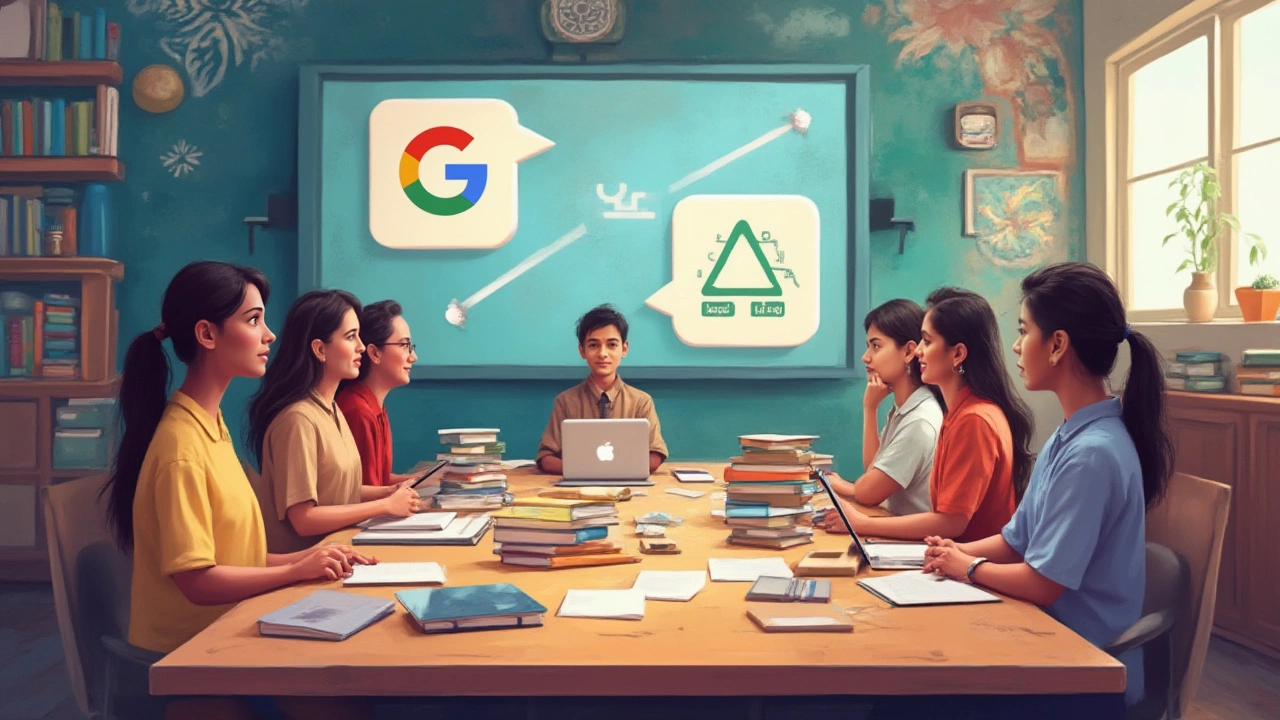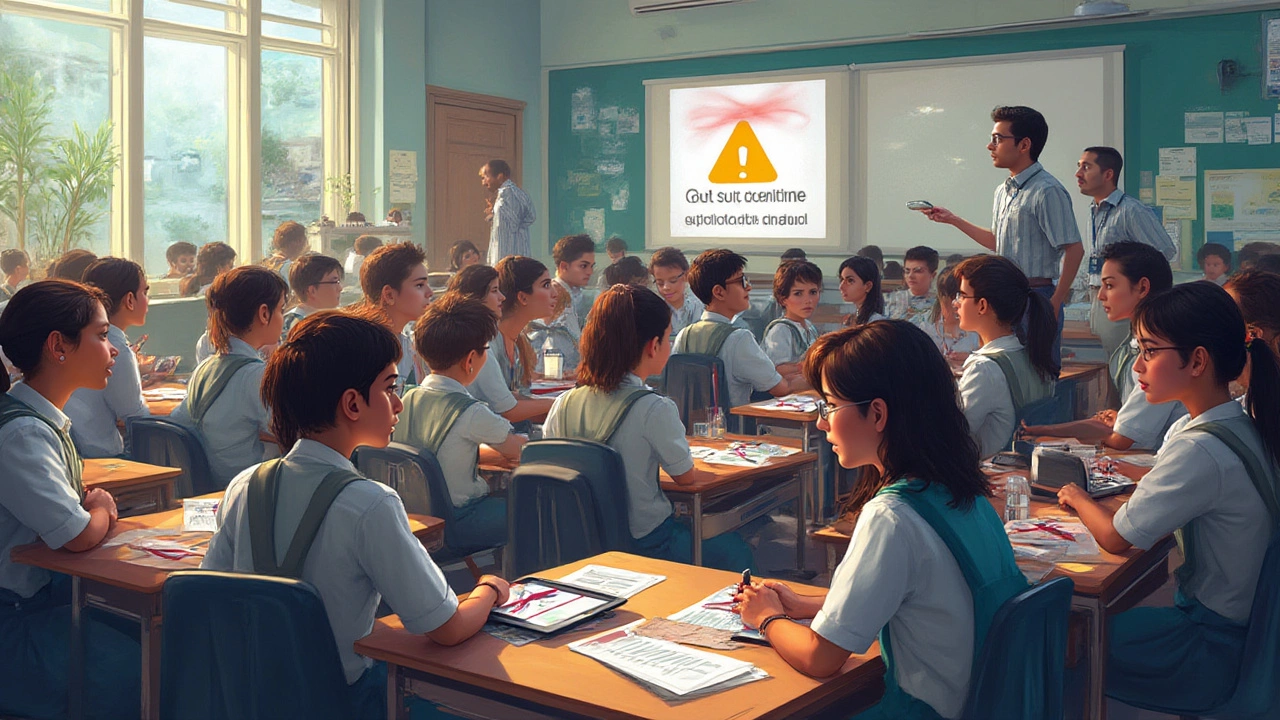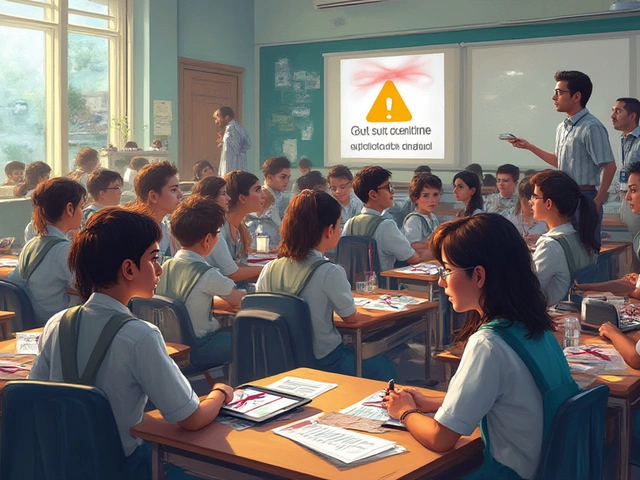Remember back when Google Classroom seemed to have taken over every school’s digital classroom almost overnight? It was everywhere: from small-town Indian schools to Tokyo prep academies, students were logging in with their Gmail, teachers were posting assignments, and everyone marveled at how easy learning online suddenly became. Fast forward to 2025 – and that cozy, Google-shaped monopoly is showing cracks. The quiet exodus from Google is picking up pace, and it’s not just the tech geeks or privacy activists whispering about it anymore. School boards, teachers, and even parents are raising eyebrows about how much control Google has over kids’ learning environments. If you haven’t heard your neighborhood school talking about "alternatives," give it a month or two. So, what’s behind this shift? It turns out that the story’s a lot deeper than just wanting to try something new.
Privacy Fears and the Data Dilemma
Let’s be real: most parents don’t read those 20-page user agreements when their kid signs up for Google Workspace for Education. Who does? But word has spread that even with Google’s “student privacy” promises, massive amounts of student data—from browsing history to classroom activity logs—are being stored, analyzed, and potentially used in ways even most teachers can’t explain. The Illinois Biometric Information Privacy Act lawsuit in the US grabbed headlines in 2021 when Google was accused of collecting facial scans from students using Chromebooks—without proper consent. Even if it was settled out of court, it sent schools scrambling to ask harder questions about student surveillance. European schools, backed by strict GDPR rules, have already started tearing down Google setups for violating privacy policies, with schools in Denmark and the Netherlands leading the charge.
Closer to home in India, the Delhi High Court raised alarms last year about EdTech companies (not just Google, but it’s impossible to leave them out) using student data to target ads or sell insights to third parties. Google, of course, denies direct misuse, but let’s face it—if your teenage nephew’s YouTube recommendations are suddenly full of JEE coaching channels, that’s probably not an accident. Parents worry this digital fingerprint could follow students for years, affecting scholarships, university applications, or even job prospects. No one wants their kid’s math quiz results floating around in some faceless server farm forever.
What can schools do? School IT heads are now scrutinizing privacy clauses in contracts. Some demand clear, delete-on-demand policies and external security audits. Others are turning to open-source tools like Nextcloud or Moodle, attracted by the promise of no hidden tracking or third-party data mining. There are pilot programs in Bengaluru and Melbourne testing encrypted, locally-hosted educational platforms, minimizing the risk of sensitive info leaking out. It’s not that teachers hate Google’s workflow—it’s that they want guarantees that only teachers and students, not marketers, researchers, or algorithms, know what’s happening inside the digital classroom.
Changing Tech Rules and the Rise of Alternatives
Google used to be the cool kid at EdTech parties—seamless, pretty, free (or almost), and universally compatible. But rules are shifting. In the US, new state-level data protection laws arrived in 2024, making districts responsible for every line of data they share. Australian schools, shaken by the Optus data breach last year, now have national cybersecurity mandates banning use of foreign cloud storage for student records. Suddenly, “easy” equals “risky.” School districts in California switched to local EdTech startups like Clever and Otus, which promise better compliance controls, and that trend is spilling over. Some German schools even revived good old pen-and-paper for sensitive tests, just to keep assessment data away from prying algorithms.
But here’s the thing: ditching Google doesn’t mean going backward. Startups are building systems tailored to regional textbooks and exam formats, so students aren’t juggling yet another US-centric interface. India’s DIKSHA portal, for instance, is now picking up momentum because it’s managed entirely by the Ministry of Education—no risk of servers sitting outside the country. There’s a lot more local flavor: support for Indian languages, offline access, content designed for board exams. In the UK, teachers are experimenting with century-old school management software like SIMS, revamped to work from local servers or locked-down devices, rather than the open cloud. No one’s about to kill cloud computing altogether, but "cloud” now comes with a healthy dose of skepticism and checklist-ridden risk assessments. And there’s a renewed curiosity for hybrid solutions—using the cloud for collaboration but keeping sensitive records stored on locked-down premises.
How do schools make the leap without chaos? Smart IT administrators test alternatives with a single grade level or subject, collect feedback, and add stricter data access permissions (for example, teachers can see only their classes, not the whole school’s info). Teachers get a voice, too—after all, they’re the ones wrestling with logins and lesson plans every day. There are messy moments (nobody’s nostalgic for password resets or forgotten attachments), but the fear of falling behind is now matched by the desire to stay in control.

Security Breaches: The Last Straw?
Cybersecurity doesn’t just mean locking the door at night anymore—it’s about preventing ransomware, phishing scams, and intellectual property theft. Schools have seen rising attacks targeting their Google-based platforms over the last two years. Take the case from March 2024, when a Midwestern US school’s Google Workspace was hacked, holding thousands of student records hostage until the district paid up. Such stories spread fast. Because, frankly, cybercriminals know schools using Google accounts are likely running with barebones IT budgets and less-than-obsessive password habits.
Google does patch vulnerabilities quickly—one of its strengths, really—but hackers love a widespread system because it lets them test one trick and hit hundreds of campuses. This isn’t limited to the US or Europe; a Bengaluru international school had to cancel board exams last year after a ransomware attack froze its Google Drive database. Meanwhile, insider threats—a teacher with too much access, or a disgruntled admin—aren’t as rare as you think. A 2023 study from Cyberpeace Foundation found that 43% of Indian schools experienced data leaks that started with someone inside the system, usually via Google-integrated platforms.
To fight back, a lot of schools are adding multi-factor authentication (MFA) by default, limiting admin privileges, and running security awareness drives twice a year at minimum. But when breaches keep making headlines, nervous school boards look at more “walled garden” solutions. Platforms like Microsoft Teams for Education, Zoho Learn, and even local services such as Class Saathi in India or CENTA in Africa, are snapped up because they let admins see exactly who’s using what, log who downloads files, and enforce strict device checks. Encryption is now a standard feature, not an afterthought. Some schools have even begun using physical security keys alongside passwords. Sure, it slows things down a tiny bit, but it’s a decent price for peace of mind if you’re holding on to years of student files.
The Human Side: Teachers, Students, and the Future of the Classroom
So, while tech experts hash it out over servers, protocols, and security tokens, let’s talk about the people always stuck in the middle—teachers and students. When Google took over, it was a mixed bag: some teachers loved the one-click simplicity, others hated the lack of customization. Students, especially the older ones, soon found ways to "game the system," sharing Google Doc assignment answers with a quick link or even getting locked out mid-exam when Wi-Fi failed. The pandemic made Google’s tools essential, but after two years, there’s a sense that learning platforms should do more than just exchange assignments—they should help kids think critically, collaborate creatively, and learn without feeling watched 24/7.
What are schools choosing instead? It’s not about one perfect tool—many pick two or three platforms that fit their curriculum best. In India, schools are doubling down on homegrown solutions built into the CBSE or state boards’ own platforms. Many teachers prefer apps like Priya’s Learning, which specializes in interactive quizzes aligned with state standards. In Europe, open-source collaboration tools like Etherpad and Edmodo are on the rise, since they don’t lock data behind paywalls or proprietary formats. Teachers—finally given some say—are sharing best practices in WhatsApp and Telegram peer groups, voting for tools that are easy to use and don’t drown everyone in technical jargon.
Change isn’t pain-free. Moving away from Google means extra training, glitches, and maybe an ugly spreadsheet or two to transfer grades. But it’s not all grumbling. Schools report that students engage more when they’re not just taking digital worksheets but using video, audio, and creativity-based tasks native to new platforms. And with less worry about faceless companies peering over their shoulder, some teachers say their students “relax into learning” again—more willing to experiment, speak up, and take ownership.
If you’re a teacher or parent, what’s your take? Maybe your school’s still all-in on Google. Or maybe you’re being wooed by a promising new platform—one that puts privacy (and sanity) first. Either way, one thing’s for sure: this movement isn’t about hating Google, but about building a healthier classroom—one login at a time.

